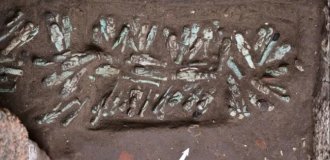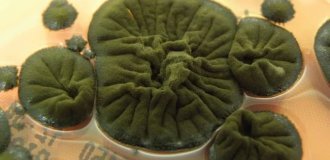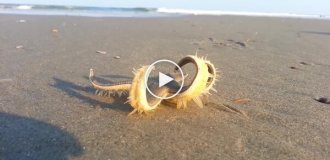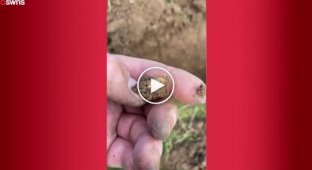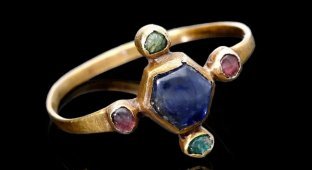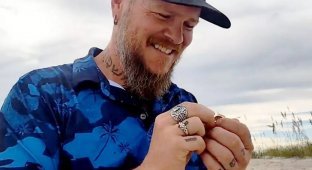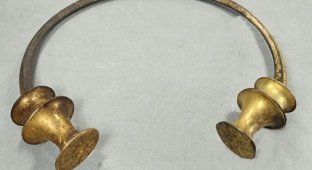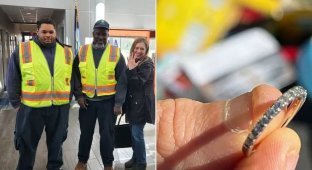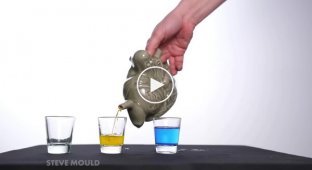British treasure hunter finds 18th century gold ring in field (5 photos)
A treasure hunter has used a metal detector in Norfolk to uncover a piece of jewellery that belonged to British royalty. Malcolm Weale, 53, spent a year and a half combing a field near Thetford before his luck finally smiled on him. He was shocked to see the ring sparkling in the sun. 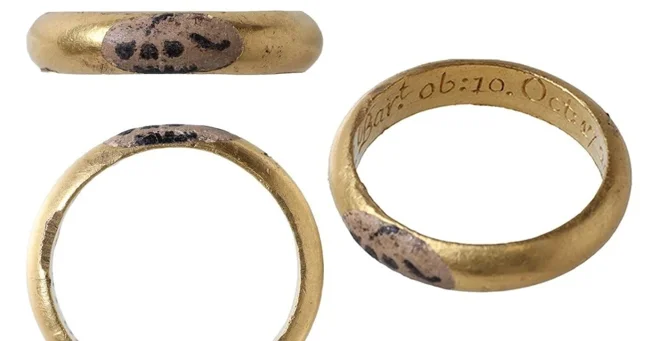
Weale said: “I knew straight away it was something special. It was lying 15cm down in the mud, shining pure gold, just like the day it was dropped. It’s very rare that you can identify a find.” 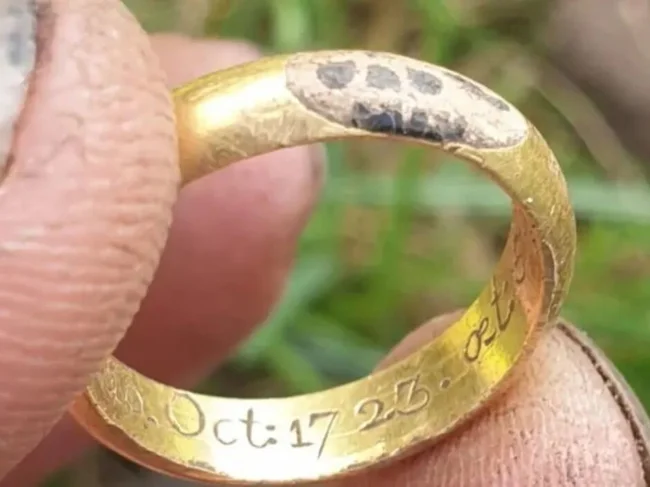
The piece was made about 300 years ago in memory of a member of the British nobility named Sir Bassingborn Gaudi.
On the outside there is an oval depression filled with jewelry enamel. This material is created by fusing powdered glass or ceramics at high temperatures. Black lines on a gray background depict a skull.
The baronet's name and date of death are written on the inside of the ring.
The inscription reads: "B.G. Bart. ob: 10. Oct: 1723. aet: 56". According to historian Helen Gick, it means: "B.G. Baronet, died October 10, 1723, aged 56." 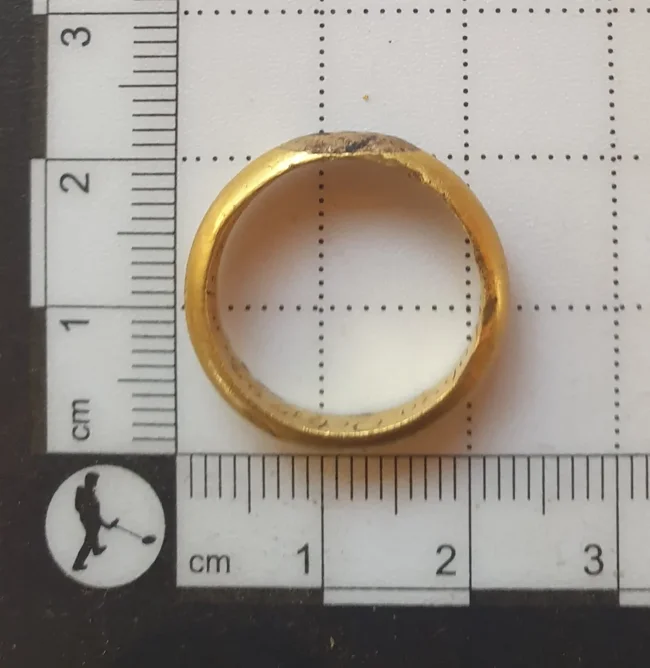
Sir Bassingbourn Gowdie, 3rd Baronet of Harling, died in a hunting accident in 1723, aged 56. He likely commissioned several such "mourning rings" to be made after his death, but Will has only found one.
But who owned this piece 300 years ago remains a mystery. According to records, Sir Bassingbourn Gowdy was unmarried and had no children. The ring may have gone to a friend or associate. 
Self-portrait of the artist John Gowdy
Sir Bassingbourn Gowdy was the son of the famous artist Sir John Gowdy (1639-1699), who, along with his brother Framlingham, was born deaf and dumb.
The brothers became the first deaf Britons to be educated and learn to read and write using sign language.
John and Bassingbourn came from a powerful family of lawyers who flourished in Norfolk and Suffolk in the 16th and 17th centuries. The Gowdie family traces its roots back to Sir Bruce Gowdie, a French knight who was captured during the Hundred Years' War (1337-1453).
Bruce Gowdie was captured in 1352. After his release, he became a citizen and settled in Suffolk. In the 1500s, his descendants built the Gowdie Hall estate in Norfolk. Queen Elizabeth I stayed at Gowdie Hall in 1578. 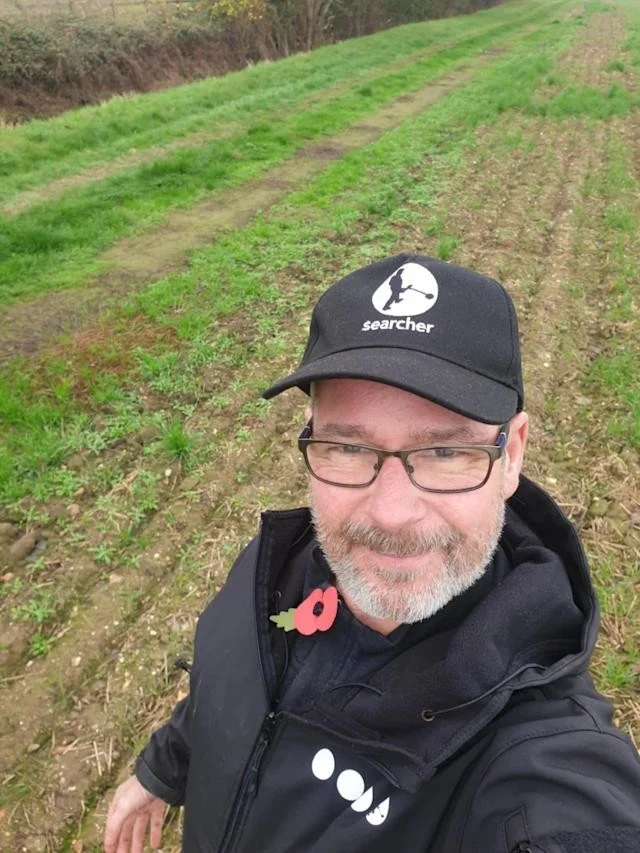
Malcolm Wheal
Wheal has been into treasure hunting since he was 7 years old, and he says that finding one of his happiest moments has been one of his greatest moments.
“Over the years I’ve found a lot of amazing things: late Roman coins, gold rings and jewellery. Last year was particularly good because the rains kept the soil very moist. With a metal detector, searching can take days, weeks or months. Sometimes it only takes 20 minutes to make an amazing find,” the Briton said.




